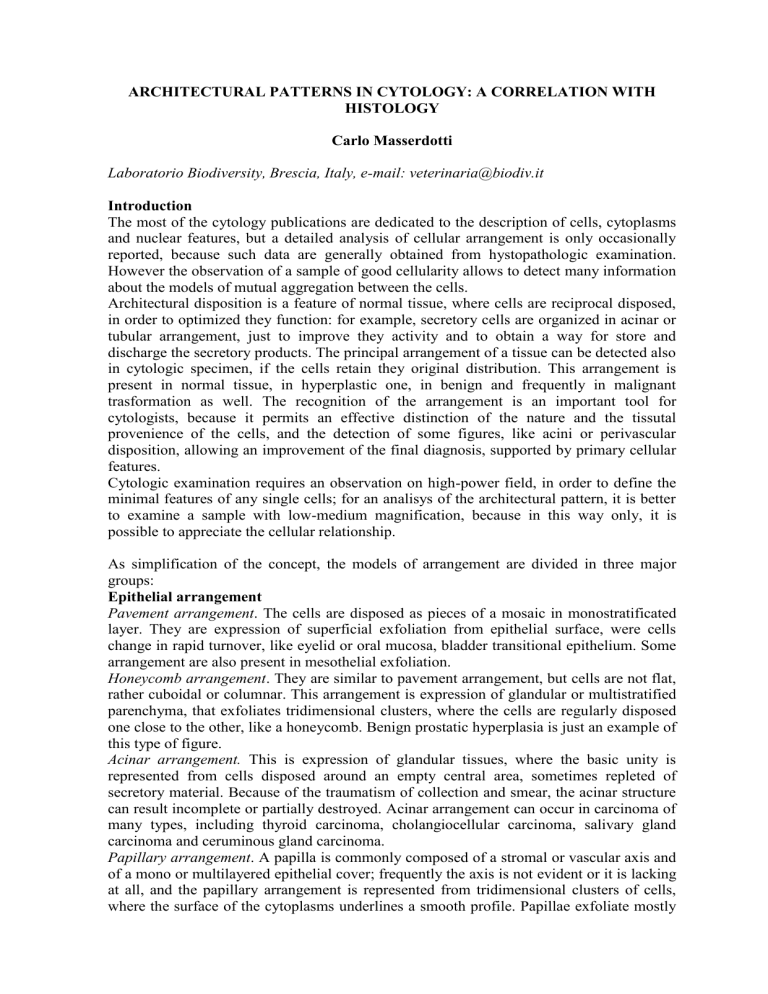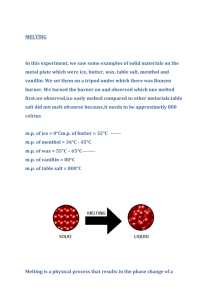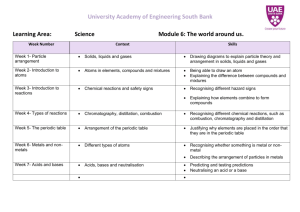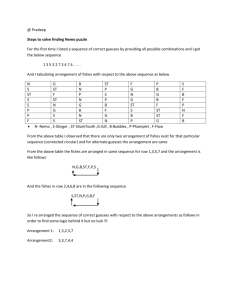Architectural patterns in cytology: a correlation with histology

ARCHITECTURAL PATTERNS IN CYTOLOGY: A CORRELATION WITH
HISTOLOGY
Carlo Masserdotti
Laboratorio Biodiversity, Brescia, Italy, e-mail: veterinaria@biodiv.it
Introduction
The most of the cytology publications are dedicated to the description of cells, cytoplasms and nuclear features, but a detailed analysis of cellular arrangement is only occasionally reported, because such data are generally obtained from hystopathologic examination.
However the observation of a sample of good cellularity allows to detect many information about the models of mutual aggregation between the cells.
Architectural disposition is a feature of normal tissue, where cells are reciprocal disposed, in order to optimized they function: for example, secretory cells are organized in acinar or tubular arrangement, just to improve they activity and to obtain a way for store and discharge the secretory products. The principal arrangement of a tissue can be detected also in cytologic specimen, if the cells retain they original distribution. This arrangement is present in normal tissue, in hyperplastic one, in benign and frequently in malignant trasformation as well. The recognition of the arrangement is an important tool for cytologists, because it permits an effective distinction of the nature and the tissutal provenience of the cells, and the detection of some figures, like acini or perivascular disposition, allowing an improvement of the final diagnosis, supported by primary cellular features.
Cytologic examination requires an observation on high-power field, in order to define the minimal features of any single cells; for an analisys of the architectural pattern, it is better to examine a sample with low-medium magnification, because in this way only, it is possible to appreciate the cellular relationship.
As simplification of the concept, the models of arrangement are divided in three major groups:
Epithelial arrangement
Pavement arrangement . The cells are disposed as pieces of a mosaic in monostratificated layer. They are expression of superficial exfoliation from epithelial surface, were cells change in rapid turnover, like eyelid or oral mucosa, bladder transitional epithelium. Some arrangement are also present in mesothelial exfoliation.
Honeycomb arrangement . They are similar to pavement arrangement, but cells are not flat, rather cuboidal or columnar. This arrangement is expression of glandular or multistratified parenchyma, that exfoliates tridimensional clusters, where the cells are regularly disposed one close to the other, like a honeycomb. Benign prostatic hyperplasia is just an example of this type of figure.
Acinar arrangement.
This is expression of glandular tissues, where the basic unity is represented from cells disposed around an empty central area, sometimes repleted of secretory material. Because of the traumatism of collection and smear, the acinar structure can result incomplete or partially destroyed. Acinar arrangement can occur in carcinoma of many types, including thyroid carcinoma, cholangiocellular carcinoma, salivary gland carcinoma and ceruminous gland carcinoma.
Papillary arrangement . A papilla is commonly composed of a stromal or vascular axis and of a mono or multilayered epithelial cover; frequently the axis is not evident or it is lacking at all, and the papillary arrangement is represented from tridimensional clusters of cells, where the surface of the cytoplasms underlines a smooth profile. Papillae exfoliate mostly
from intratubular epithelial benign and malignant proliferation, like mammary tumors, but they can occur also in exfoliation from ovarian carcinoma, from mesothelial surface and from transitonal hyperplastic epithelium.
Palisade arrangement . In this type of arrangement the cellular bodies frequently show columnar shape and disposition in regular rows, that looks like a palisade. Many tissues exhibit this type of arrangement, for example ciliated columnar epithelium of large respiratory ways or columnar intestinal epithelium. Both tissues can yeald cells arranged in palisade, in benign condition, such hyperplasia of respiratory epithelium, and in malignant one, such intestinal carcinoma or cholangiocarcinoma, where they appear together with acinar structures. Cuboidal cells can show the same arrangement in rows, as observed in some appendage tumors, such trichoblastoma. Exceptionally this arrangement is showed from exfoliation of mesenchymal tumors, like Antoni-A figures of schwannoma.
Trabecular arrangement . The cells exfoliate in large elongated tridimensional or bidimensional clusters, that exhibit multiple ramification. This is expression of epithelial neoplastic solid proliferation supported by fibrous stroma, like commonly observed in some mammary and hepatic tumors; this type of arrangement is readily detectable in cytologic samples of sertoli cells tumor.
Mesenchymal arrangement
Storiform arrangement . The spindle cells are arranged in waves-like bundles, sometimes associated with stromal strands, where they intersect or interwine at various angles. This arrangement is observed in many malignant mesenchymal tumors, such fibrosarcoma or malignant fibrous histioytoma.
Perivascular arrangement . The cells are disposed around single or multiple vascular structures, that are recognizable as endothelial elongated elements, sometimes containing a few erithrocytes. This arrangement is very useful in diagnosis of some neoplasms, such
Leydig cells tumor, hemangiopericytoma or liposarcoma.
Round cells arrangement
Rosetta-like arrangement . This is a common disposition of inflammatory cells around the target of the inflammation; a typical example is the crown of granulocytes around the acantolytic cell, as observed in pemphigus complex.
Epithelioid arrangement . Macrophages proliferation can occur in large coesive clusters, where cells aggregation results in thight cohesive structures, that seems like to be epithelial exfoliation. This picture is observed in cytologic examination of inflammatory sites, where mycotic or bacterial infectious diseases and foreign bodies reactions are inciting causes.
References
Koss L.G., Woyke S., Olszewski W., 1992. Aspiration biopsy: Cytologic interpretation and histologic Bases, 2° ed. Igaku-Shoin, New York, Tokyo.
Koss L.G., 1992. Diagnostic cytology and its histopathologic bases, 4° ed. J.B. Lippincott,
Philadelphia.







